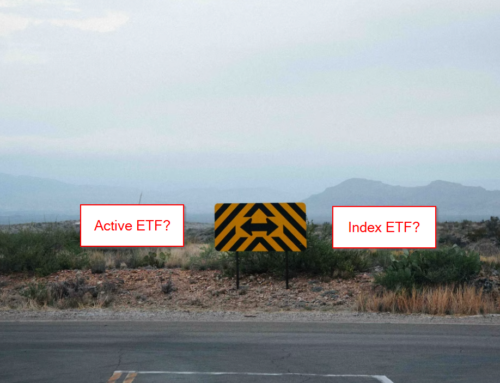We get a lot of questions related to whether or not you can keep your official track record when you do a tax-free ETF conversion. The short answer is yes, you can keep your official track record, but it can be complicated.
The situations where maintaining your track record is straightforward:
- Mutual fund conversions
- Because mutual funds are already “40-Act” funds their performance reporting standards are similar to ETFs and therefore it is easy to port the track record over to an ETF.
- Hedge fund conversions
- More complex, but possible. The primary requirement is the the old track record’s calculation standards meet 40-Act requirements. Here is a no action letter that walks through the details.(1)Please note that a hedge fund needs to be 40-Act compliant the entire time. Super illiquid stocks and 5x levered Zimbabwe credit swaps can’t be in the portfolio and will invalidate the ability to port performance. Also, the performance needs audited financials from a PCAOB firm.
- A single managed account
- More complex, but possible. This is identical to a hedge fund reorganization.
An important disclaimer: the above talks about the legal ability to port a track record…but then you have the reality! Some other considerations:
- Some data providers have legacy systems and/or scrape data from public websites, which may mean that pre-ETF performance won’t be integrated into the software/website.
- FINRA still struggles with prior track records because they don’t fit neatly into their box. One needs to ensure that the track record gets into the PRIMARY performance section of the Pro / SAI.(2)If the tracks are not in the main table, it will be tough to get FINRA approval for standard marketing approval. This also means you really need a multi-year track record to ensure you fit the standardized, full calendar year track record (e.g., 9 months in 2018 and 9 months in 2019 is no good. Best to have FULL CALENDAR year tracks to minimize issues).
The situations where maintaining your track record is technically not possible:
- Multiple managed accounts
- Even if the track record is GIPS certified, you cannot use this as your official track record. You can discuss the prior performance in your prospectus, however. The best case is as a supplemental in the back of your ETF’s Pro or SAI. Will have to show “new” and “old” side by side and under select circumstances.
- Similar accounts (i.e., you start up a fresh ETF that runs a very similar strategy to your managed accounts, HF, or MF.)
- The track record of the legacy accounts cannot be used as the official track record of the ETF.
- The track record of legacy accounts can be discussed with potential clients under certain circumstances (speak to legal for details).
Other considerations related to keeping your official track record
Here is the bottom line: converting into the ETF structure can bring a lot of benefits to the table, but porting your official track record over to an ETF can be challenging.
However, even if the facts and circumstances of your situation suggest that porting your official track record into an ETF is impossible, all is not lost. Retail consumers, institutional investors, platform providers, gate-keepers, and so forth, will likely be aware of your previous performance and reputation as an asset manager/advisor and they can often read between the lines. For example, if an advisor has been running the “ACME US Dividend Strategy” for 20 years, and this same advisor launches the “ACME US Dividend ETF” with the same investment process and investment objective, it doesn’t take a rocket surgeon (or a brain scientist) to figure out that the ETF is probably a more tax-efficient version of the old strategy.
Hit up our ETF Architect website and/or reach out if you have any more questions:
References[+]
| ↑1 | Please note that a hedge fund needs to be 40-Act compliant the entire time. Super illiquid stocks and 5x levered Zimbabwe credit swaps can’t be in the portfolio and will invalidate the ability to port performance. Also, the performance needs audited financials from a PCAOB firm. |
|---|---|
| ↑2 | If the tracks are not in the main table, it will be tough to get FINRA approval for standard marketing approval. This also means you really need a multi-year track record to ensure you fit the standardized, full calendar year track record (e.g., 9 months in 2018 and 9 months in 2019 is no good. Best to have FULL CALENDAR year tracks to minimize issues). |





